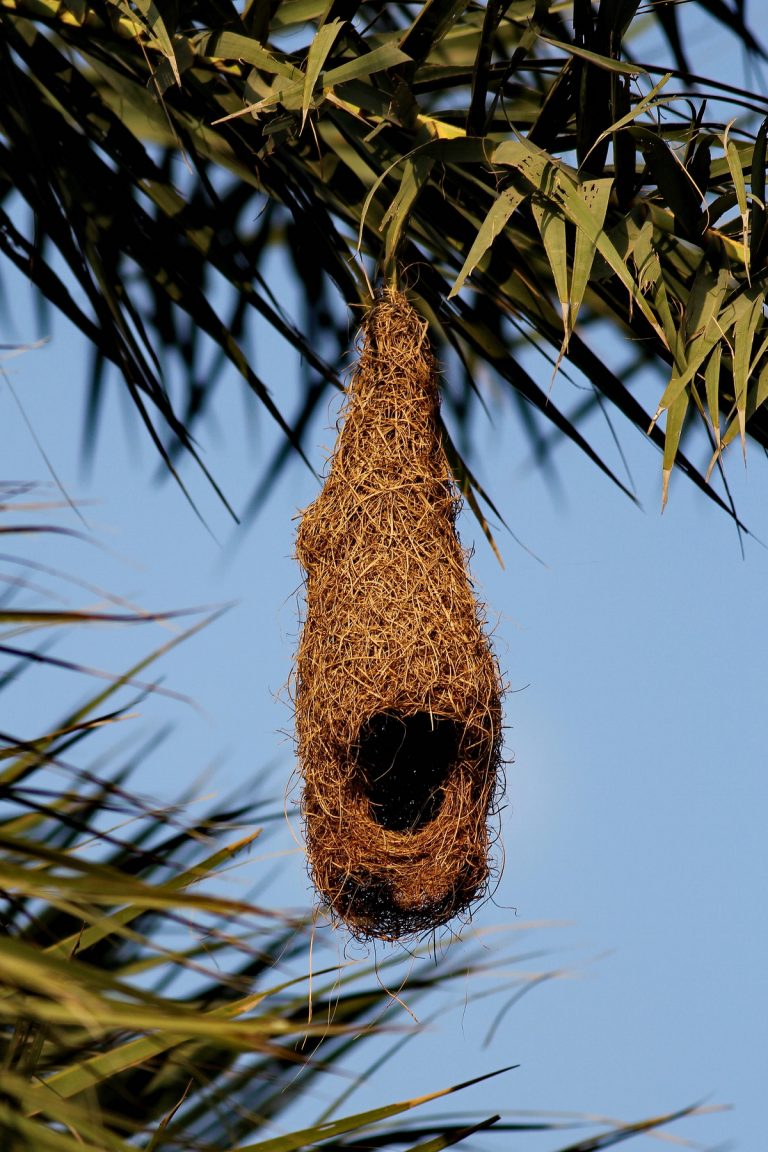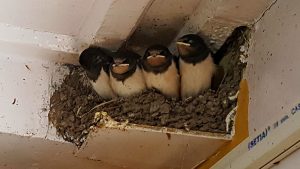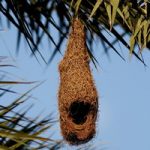Information about Birds of India
Birds nest:
A bird nest is a made structure where a bird lays and incubates its eggs and raises their young ones
The study of birds’ nests is known as Caliology and is an interesting world of study all together, not my scope of study, so jotting down all that’s been gathered and experienced during field study.
The structure made by the birds may be from grass on trees – or – a woven one hanging from a tree – or – a cavity / a chamber made in trunk of a tree – or – made by knotting tree leaves – or – a bowl made by lean sticks – or – a depression made on sand – or – on an elevation on marshy land and even more constructive being made from mud and their own saliva; dried to sold small caves. Some even go without nesting and even lay their eggs on ground / surface where as and when required. There are even some species called as “brood parasites” who lay their eggs in the nests of other birds and unknowingly letting the host being as “foster parents” and do all the hard work feeding, caring and making them fly.
Most build a new one every year, though some refurbish their old nests even some, like eagles who make platform nests on tree top, that is being used and refurbished for several years. As nests made by birds are primarily used for breeding but they have even more participation to their entire eco system where they may also be reused by some other birds for roosting and some even being used as dormitory nests.
Like most creatures, the responsibility of creating a habitable nest and breeding condition lies upon female and also to raise the new ones, whereas birds have species who make nests jointly, sole by male or as a form of the courtship display such as in weaver birds.
Penguins also donot make nests and their males have a very unique ability to tuck the egg between their legs and cover it with their belly for incubation in the harshest (Antarctic winters) climate on earth.


As its seen that most birds build nest on their own, but some species like seabirds, , flamingos, storks, some herons and some sparrows, gather together in sizeable colonies. Birds that nest colonially may benefit from increased protection against predation. They may also be able to better utilize food supplies.
These colonized nests can be seen in many places especially there Storks, Ibis, Cormorants etc breed. Bharatpur is one such site where huge colonies can be seen.
The most simple and vulnerable nest construction is the scrape, which is just a open depression in soil and the only purpose it solves it to stop the eggs to roll away. The birds who build such nests, surround and try to hide their eggs with some stones and similar shape objects around to camouflage the eggs and to provide insulation, whereas on the other hand pendant type nests are build with unbelievable display of engineering. It very delightful to observe such nests in wild.
Many species bird conceal their nests to protect their chicks from predators and also try to choose the nest site rather inaccessible. Birds have also developed the technique to do sanitation of their nests reduce the effects of parasites.




